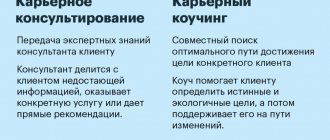The concept and meaning of personal identification based on appearance
Identification of a person by appearance is the establishment of the identity or difference of a particular person by describing the signs of appearance according to a certain system and using special terminology.
Identification of a person by appearance is possible due to the fact that each person has only his own individual set of characteristics that distinguish him from other people and even close relatives. Individuality is manifested in the uniqueness of shapes, sizes and features of the external parts of the body, which in turn also have a set of characteristics: size, placement, configuration, etc. For example, an element of the face such as the forehead has the following characteristics: size, contour, position relative to the vertical. The combination of elements with characteristic features, although it has certain boundaries, is nevertheless practically infinite. All this creates a unique set of characteristics that make it possible to distinguish each person by his appearance from the mass of others and to identify him. The identification value of individual characteristics depends on how often they occur in different people. The less common a feature is, the greater its identification value.
In addition to individuality, signs of appearance are relatively stable. This is due to the fact that during life some signs undergo age-related and pathological changes. These changes may be more or less significant, but in a certain period of time the totality of signs of a person’s appearance is unique and individual. The most stable characteristics are those determined by the osteochondral structure, for example, the shape of the head, the profile line. Significant changes in appearance can occur due to injury or illness, but they are quite rare in investigative practice. A person’s appearance quickly changes when facial hair changes, which must be taken into account when identifying and searching for a criminal.
Another property of a person’s external signs is reflexivity. This property of appearance is imprinted in various images and people’s memory. Objective and subjective reflections are distinguished. Objective ones include photographs, films, videos, x-rays, bone remains (mainly the skull), death masks and casts. Subjective ones are formed on the basis of mental images in people's minds. This description will include a person (“verbal portrait”), subjective portraits, plastic and graphic reconstructions of the face based on the skull.
Materials for identifying a person by DNA
There are different methods for DNA identification of a person in Moscow, the most common method is DNA testing based on buccal epithelium. This material is collected by swabbing on the inner surface of the cheek.
With the help of laboratory analysis, you can absolutely accurately determine the fact of paternity or maternity, and establish other family ties. Other materials can also be used for research:
- stains of blood and other biological fluids;
- hair with hair follicles;
- nail clippings, fragments of teeth and bones;
- toothbrush, comb and other personal items.
Basic principles of describing appearance using the “verbal portrait” method
In forensic practice, it is customary to record data about a person’s appearance through a description, which can be disordered and ordered. Eyewitnesses usually talk about the appearance of the person they saw in any form, using words and expressions depending on their life experience, education, etc.
An ordered, systematized description in criminology is called a “verbal portrait.” Such a description makes it possible to uniformly characterize the same signs and to perceive these descriptions in the same way by different people. Uniformity is achieved by observing the basic principles of describing appearance:
1. Maximum completeness of description. This is achieved through a comprehensive characterization of the structural elements of the head, face, torso, limbs, clothing, etc.
2. Strict sequence of description (from general to specific). In a person’s appearance, first, general physical properties are distinguished, such as gender, age, nationality, and then physique - torso and limbs, head (face) and its individual parts; functional signs; clothing and special signs.
3. Use of special terminology. Compliance with this principle makes it possible to eliminate discrepancies in the characteristics recorded in the descriptions, ensure uniformity and accuracy of the description, and prevent errors. Do not include unclear or vague terms in the description.
4. Description of the parts of the head (face) from the front and in profile. When describing elements of appearance, special attention is paid to the head (face), as the area containing the largest number of diverse stable features that can be observed under various conditions.
To do this, the external anatomy of the head is studied from two positions: from the front, i.e. front and in profile, i.e. on the side. When fixing profile features, it is customary to consider the right profile. However, special features are described on both the right and left sides of the face.
5. Description of individual parts and details of the body, indicating their size, shape (contour), position, color (if possible) and features.
The size of a body part is determined, as a rule, by visually comparing the sizes of one element to the sizes of other parts and details of the body. For example, the size of the auricle is assessed relative to the size of the head, the height of the forehead - relative to the height of the nasal and oral parts of the face. To describe the size, a three-member system is used: small, medium, large; sometimes five-membered: very small, small, medium, large, very large.
When describing the shape (contour) of body parts, the terminology of well-known geometric shapes is used - convex, concave, flat, round, square, etc. or natural objects - dome-shaped, almond-shaped, pear-shaped, etc.
The position of external features refers to their placement relative to a horizontal or vertical line, other elements (for example, a fold on the chin), and sides of the human body (front, back, top, bottom, etc.). By position, external elements can be characterized as horizontal, vertical, beveled, protruding, oblique, internal, lowered, adjacent and protruding.
Color is indicated in relation to eyes, hair, facial skin, scars, birthmarks, tattoos and other special features. Color is expressed in generally accepted terms (black, white, red, etc.).
Personal identification history
Personal identification (from Latin identifico - I identify) - recognition of identity, recognition. Identification is based on pattern recognition - establishing the affiliation of an object (for example, a person’s personality), process, phenomenon, situation, signal to one of the pre-selected objects - images. The recognition process is based on comparing the characteristics of the identified object with the characteristics of other known objects.
Pattern recognition occurs in human everyday life. Thus, we almost instantly recognize a familiar person by their appearance in a crowd or by their voice in a telephone conversation. Recognition methods are also used in forensics. This is the establishment of personal identity based on a combination of general and specific characteristics (for example, identification of a person by passport, handwriting, handprints, photographs, etc..).
A number of biological characteristics - appearance, shape of the face and hands, ears, fingerprints, gait, handwriting, form and method of signature, iris pattern, voice and continuous speech, blood test, fragments of the genetic code are unique to each individual and therefore are used for personal identification. In passports, passes, and financial documents, photographs and a personal signature are used for this. But photographs can be replaced, and the signature can be forged. Therefore, personality recognition methods have to be continuously improved.
There are paper and biometric personal identifiers.
Paper identifiers are a passport, an identity card, a driver's license. There are also passwords, personal identification numbers and PIN codes.
The first identity cards appeared in Russia in the 18th century. In 1721, Peter I introduced mandatory passports for peasants temporarily leaving their permanent residence. At the beginning of the 19th century, foreign passports appeared. By the end of the 19th century, data on origin, class, and religion began to be included in passports. In 1918, the passport system was eliminated. In 1932, passports were introduced in cities, urban-type settlements, regional centers, as well as in the Moscow region and a number of districts of the Leningrad region. Passports were not issued to military personnel, disabled people and residents of rural areas. The passports contained information about date of birth, nationality, social status, attitude to military service, marital status, and registration. The village residents did not have passports. And only in the 1960s N.S. Khrushchev returned passports to the peasants, thereby saving them from “Soviet serfdom.”
In 1997 B.N. Yeltsin introduced passports for citizens of the Russian Federation. The new Russian passport does not contain the notorious 5th point “Nationality”. The concept of “Personal code” was introduced. Retained: registration at the place of residence, which replaced the notorious Soviet registration, attitude towards military service, marital status. The cover of the new Russian passport features the embossed State Emblem of Russia, with the Moscow Kremlin on the inside. There is a personal signature of the passport holder.
But a passport, identity card, or driver’s license can be lost and can be forged relatively easily. You can forget your password or PIN code or confuse it.
Biometric identifiers are based on physiological or behavioral characteristics that are highly individual to each person. These include appearance, gait, handwriting, fingerprints, iris, face shape, etc. These unique qualities of each person are difficult to fake, impossible to forget or lose. This is their obvious advantage over paper identifiers.
Today, mainly three methods of biometric identification are used: fingerprint recognition, iris recognition and facial recognition.
The founder of the use of biometric identification was the French criminologist Alphonse Bertillon (1853 – 1914). He used the findings of anthropologists that the geometric dimensions of body parts in different people never completely coincide. Beginning in 1883, he measured criminals and entered data about them into a card index. This method is called bertillonage. Bertillon came to the conclusion that for a combination of 14 units of measurement (height, upper body length, head circumference and length, length of feet, arms, fingers and ears, etc.) of an adult, the chance of a match according to probability theory is 1: 286,435 456. If each criminal is carefully measured and the results are carefully recorded in personal cards, unmistakable identification will become possible. This method was troublesome, but it was more reliable than previously known identification methods.
Alphonse Bertillon
Verbal portrait
In 1891-1892, an anarchist operating under the pseudonym Ravachol kept all of Paris in fear. When he was arrested (above), Bertillon identified him through his file cabinet as the dangerous criminal Koenigstein. This began the victorious march of bertillonage throughout Europe.
In addition to the measurement method, Bertillon developed the basics of obtaining accurate photographs of criminals, which he glued to measurement cards, as well as the basics of crime scene photography. These photographs were more accurate than the police's best description.
Bertillon began to develop another area of criminology - police photography. At the end of the 19th century, prisoners were filmed at different scales, from different points and through different optics. Bertillon noted that it is almost impossible to recognize the criminal from such photographs. As a result of his own photographic experiments, he came to the conclusion that each arrested person must be photographed twice - full face and in profile.
Police photo of spy Mata Hari
Moreover, it was necessary to film from the same distance, under the same lighting, and so that the criminal’s head was fixed in the same position. He even developed a special swivel chair.
Now two clear photographs were attached to the criminal’s personal card (this is still done today). But Bertillon's most significant invention was the prototype of the identikit - a verbal portrait of a criminal. Having compiled a special dictionary, Bertillon attached a verbal portrait to the archival card.
Photography retained its importance as a means of identification, but only fingerprints provided more complete identification reliability.
William Herschel (1833-1917), a British colonial official in India, studied the possibility of fingerprint identification. Below: impressions of his left hand, taken thirty years apart to prove their immutability.
Francis Galton (1822 - 1911) understood the advantages of fingerprinting over bertillonage. But he was unable to find an acceptable fingerprint registration system.
Description of a person's appearance
To identify a person, anatomical and anthropological signs are used that characterize the external appearance of the human body as a whole and its individual parts, as well as some functional signs and anatomical and pathological changes (special features). Various signs of clothing and other things and objects that a person constantly or often uses are studied.
Description of anatomical features
Floor. Male, female.
Age. It is established on the basis of reliable data, and in the absence of data, approximately, “by sight.” The following age periods are distinguished: children - up to 12 years; teenage - 13-16 years old; youthful - 1721; young - 22-35 years old; average - 36-60 years; elderly - 61-75 years old and senile.
Nationality (face type). In the absence of reliable data, a comparative determination of the type of person is allowed. In forensic science, European, Mongolian, Caucasian and Central Asian facial types are distinguished.
Height. It is determined, as a rule, by a three-member gradation. For men: low - up to 160 cm; medium - up to 170 cm; high - up to 180 cm and above. For women, these limits are reduced by 8-11 cm.
Body type. It is determined by comparing height, shoulder width, length of the torso, legs, development of the chest and shoulder girdle muscles, taking into account the subcutaneous fat layer. There are people with athletic, stocky, average and weak builds. In terms of body fat, a person can be characterized as thin, of normal nutrition, or overweight.
Head. In relation to the body, the head can be small, medium and large; The shape of the parietal part is flat, dome-shaped, ovoid. The position of the back of the head relative to the vertical is beveled, vertical, and protruding. The face as a whole is described by its general configuration: round, oval, triangular, square, rectangular, diamond-shaped.
Hair. When describing hair, their presence, configuration, hairline, length, type of hairstyle (haircut) or degree of baldness are noted. Then a description of facial hair (mustache, beard, sideburns) is compiled.
Forehead. The description of the forehead is done in profile and from the front. In the profile, its inclination (position) from the vertical is noted: vertical, tilted forward and tilted back (Fig. 13.3.). The width of the forehead can be wide, medium and narrow, and the height - high, medium and low. A significant protrusion of the brow ridges and the presence of frontal tubercles are also recorded.
Brows. With respect to the horizontal, eyebrows are distinguished into oblique, horizontal and oblique. The criterion in this case (as in other cases) is a deviation from the horizontal by more than 5°. According to their position relative to the eyes, eyebrows can be high, medium and low. Along the contour of the upper edge, the eyebrows can be straight, arched, curved, broken, triangular.
Eyes. When determining the characteristics of the eyes, the following are distinguished: the structure of the palpebral fissure, the protrusion of the eyeballs in the orbits, the color of the iris. The palpebral fissure is described along its contour (oval, round, triangular, slit-like) (Fig. 13.4.); degrees of disclosure (medium, large, small); relative position of the corners of the eyes (horizontal, oblique internal, oblique external). Based on the position of the eyeballs in the orbits, eyes are distinguished between convex and sunken.
Eyelashes. Marked: length (long, medium, short), contour (straight, curved).
Nose. In relation to other elements of the face, the nose can be large, medium or small. The overall size of the nose depends on its height, width and protrusion. The height is determined in profile by the distance from the deepest place of the nose to the lower edge of the nasal septum. The nose can be medium, large (long) and small (short). The width of the nose is determined between the extreme points of its wings. Based on this parameter, a nose is distinguished between narrow, wide and medium. In terms of protrusion, the nose can be strongly, moderately and slightly protruding. The contour of the bridge of the nose is remembered quite well by eyewitnesses. In forensic science, it is customary to call the contour of the bridge of the nose straight, convex, concave and tortuous. The base of the nose can have three positions relative to the horizontal: raised, horizontal, lowered.
Accuracy of human identification by DNA
As world practice has shown, identification by DNA test is the most accurate and reliable method, the effectiveness and high efficiency of which is a scientifically proven fact. This procedure allows you to conduct a DNA test for paternity in Moscow, motherhood and other degrees of relationship are possible with a probability of 99.999999% . In this case, the negative result is 100.0%. Modern technologies make it possible to absolutely accurately establish the identity of a deceased person and determine paternity even before the birth of a child.
The research results do not require additional analyzes and are valid for an unlimited period . The expert opinion is an official document and is accepted for consideration by courts and other government bodies.







